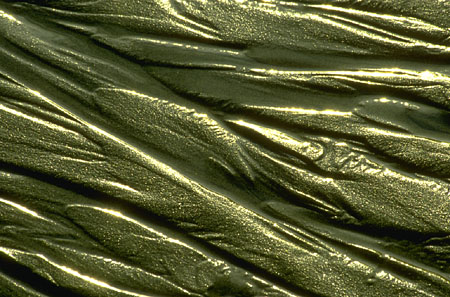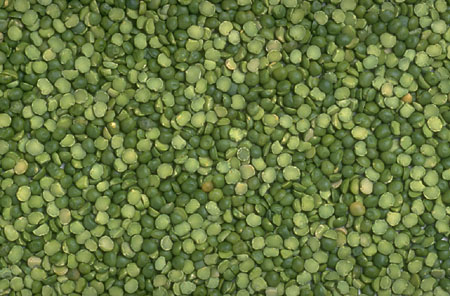LITR 5535: American
Romanticism

Sample Student Midterm 2006
Corey Porter!
10.6.06
Eighteen of Nineteen:
How Cooper Fails to Express the Sublimity of Nature
“What
is nature to him? There is never a beginning, there is never an end, to the
inexplicable continuity of this web of God, but always circular power returning
to itself. Therein it resembles his own spirit, whose beginning, whose ending,
he can never find, —so entire, so boundless. …—in the mass and in the
particle, nature hastens to render account of herself to the mind.”
-Ralph
Waldo Emerson
Only against the aggregate of surrounding conditions and influences does one’s mettle become apparent. Man removed from all environments is no longer man, for he has nothing from which to react or recoil, nothing to triumph over, nothing to gain, to lose, to define; a man’s environment makes the man. Such stands true in Romanticism, as Irving, Poe, and Cooper would have their readers believe. These three romantic authors write fiction whose environments play large in part to understanding their characters. Romanticism calls for the acknowledgement of the sublimity of nature, or rather, recognizing natural overwhelming beauty in the face of horror, fear, awe, etc. Irving and Cooper separate characters like Ichabod Crane and Hawkeye from others by defining them against very physical surroundings, such as the church bridge or the New England forest, engaging the reader in a direct confrontation with the sublime. The sublimity of nature is best expressed when a character is defined against his environment.
Irving’s New England is richly forested, green backdrop to “The Legend of Sleepy Hollow.” His small village lies nestled in a lush valley cut through by a small speaking brook, a model of tranquility. It is from this “listless repose” that the sublime first rises. “A drowsy, dreamy influence seems to hang over the land, and pervade the very atmosphere. …The whole neighborhood abounds with local tales, haunted spots, and twilight superstitions(.)” The landscape is so beautiful that locals have given a mysterious, almost inexplicable air to it. Ichabod Crane, schoolteacher, “tarries” into Sleepy Hollow and this sublimity washes over him. Ichabod is soon susceptible to the local purveyors of ghost stories, and excusing himself from an embarrassing social situation, he finds his way home one evening as his mind spins wildly, fabricating phantoms from the shadows amid the dark and oppressive undergrowth. He is ambushed along the road by the “headless horseman,” and the two ride in a fury toward the church bridge, but Ichabod never reaches the bridge, nor is he heard from again.
It is worthy to note that the environment of Sleepy Hollow which is so tranquil by day has such a terrifying effect at night. Ichabod’s sense of the sublime is captured vividly in Irving’s frenetic chase scene. The overwhelming beauty of Sleepy Hollow, combined with nightfall and the shadowy depths of Ichabod’s imagination creates a sense of terror almost palpable to the reader. The sublime, in Irving’s story, has the immense power to cripple the mind of an educated man, weakening his judgment to the point of total collapse. These masterful penstrokes illustrate the truly indescribable majesty of the sublime. (In contrast, Poe’s narrator is just the opposite - affected by his surroundings; they put the terror into his brain.)
Poe chooses to let the tale of the House of Usher unfold in the physical
house of Usher, a dilapidated, dank, rotting slab of architecture with little
hope of repair. Poe, on a day when “clouds hung oppressively low in the
heavens,” primes his reader with loaded imagery such as “bleak walls,”
“vacant eye-like windows,” “rank sedges” and “decayed trees” before
really hammering home its effect— his narrator approaches the house with “an
utter depression of soul…[comparable]…to no earthly sensation…” Poe
jumps into the sublime in this first paragraph. The utter oppressiveness of the
once-magnificent house is so powerful that it shakes the narrator to the soul.
The protagonist stays in the house of Usher with the last survivor of its
namesake, whose twin sister lies buried underneath the guest bedroom. While
reading a romance to his companion during a dark and stormy night [sic], the
narrator is confronted with noises mirroring the action in the book. A terrified
Usher rambles wildly about his twin whom he suspects has been buried alive. The
doors are thrown open and Madeline of Usher stands before the two in her bloody
burial shroud. The narrator flees, “aghast.”
The gothic backdrop of “The Fall of the House of Usher” plays a vital role in the narrator’s reaction to the sublime. The all-powerful image of a crumbling house is doubled by dead siblings. The narrator stands before the “superhuman energy” in a mixture of horror and awe. Again, the reader is privy to a powerful representation of the sublime. Poe captures some of the essence of an overwhelming terror in his narrator’s fleeing the house of Usher. I believe this action between environment and character is paramount to the reader understanding the radical power of the sublime.
What I find most intriguing, however, is that I assumed Cooper’s The Last of the Mohicans to be the pinnacle of this correlation between character and environment, but upon writing this, I found Cooper withholds the connection between reader and sublimity because his protagonist, Hawkeye, is not in direct contrast with his environment.
Cooper’s Mohicans is the ultimate expression of the sublimity of nature. Mary Brooks, in her midterm explains:
The sublime in literature manifests itself in such emotions as astonishment, fear, and power. These emotions are often invoked when describing nature as magnificent in its scale and beauty yet at the same time somehow forbidding. These descriptions have also been applied to depictions of a higher power or God who although divine and good can also inflict unimaginable suffering.
Mohicans is overripe with accounts of its characters standing in terror amid beauty, and awe amongst carnage. Marcia Toalson, in her midterm, suggests:
The physical isolations and separations that took place in the novel were brought quickly to bear by looking at a family separated by war.
Brooks continues:
Cooper describes the characters disposition while waiting in the waterfall as “Their anxious and eager looks were baffled by the deceptive light…nothing to be seen but the gloom and quite of a lovely evening”. Cooper’s description of the evening as both gloomy and lovely is a sublime representation of the environment and emotions as the characters waited for the Indians to make their appearance.
It is of importance that the Cooper’s sublime is in the New England Wilderness. No one character is more closely tied to that wilderness than Natty Bumpo himself. Hawkeye is the very embodiment of the “white man’s” embracing the “red man’s” attitudes concerning nature: he does not destroy it, pervert it, or bend it to his whim. Instead, Hawkeye is able to take his cues from his surroundings; he is able to “read” the wilderness in, as Mark Twain would say, its “broken twigs” and streams. Rather than letting his environment impose upon him, Hawkeye is in harmony with his surroundings, unlike the characters of Irving and Poe. I first thought this to be supremely capital: Hawkeye and nature acting as one would prove that environment is important to character, however I found that it alienated the reader from the sublime by removing human emotion from the situation. I believe it is imperative that emotion be expressed in the face of the sublime, or else it (the sublime) risks losing its power over us. The idea itself of a beauty so terrifying is difficult to express is words, so characters like Ichabod Crane are useful tools in placing the reader in the right mindset.
A character’s interaction with his surroundings helps articulate the sheer magnificence of the sublime. Hawkeye’s being “one with nature” obscures that by removing the subtle contrast between man and his environment. When Hawkeye is confronted with the sublime, he does not run. He stands stoically in its face, head and shoulders above other characters; a true human ideal. This opalescence proves he is too romantic a character to be affected by the sublime and excludes the reader from a glimpse of the unthinkable. Cooper is ill-equipped to present his readers with any true representation of sublimity.
|
|
|
|


